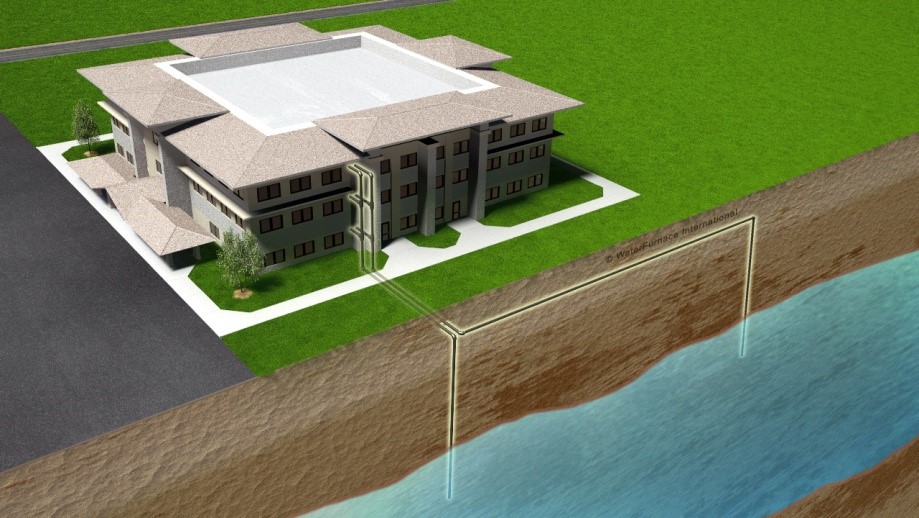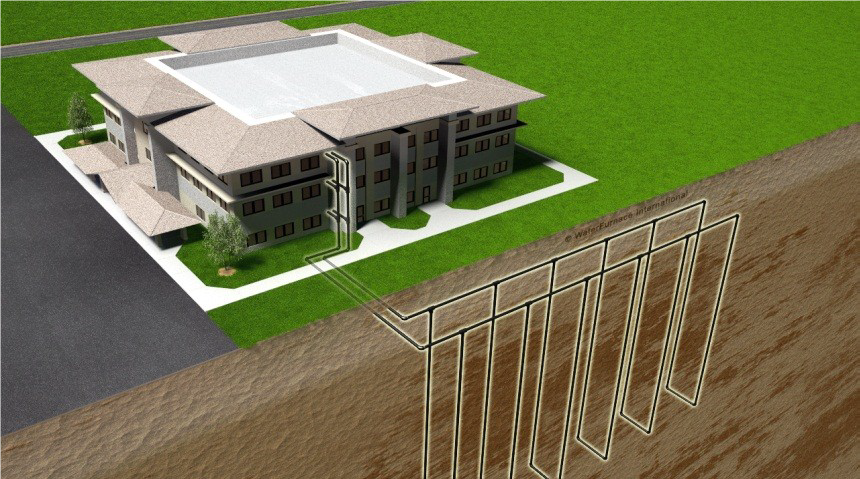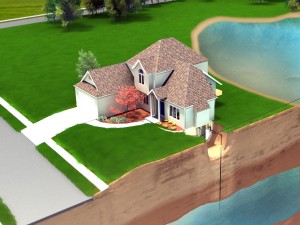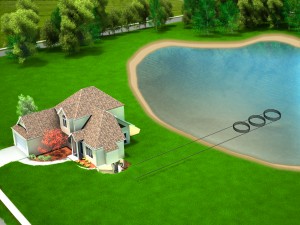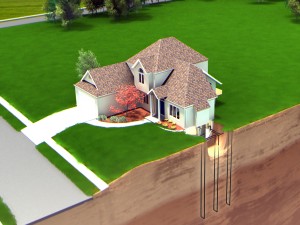HOW IT WORKS
The three main components of a renewable thermal energy system are shown in the below Figure.

Building Services
Building services is simply how thermal energy (heating or cooling) is delivered to the building. A renewable thermal energy system is no different to a conventional system in this component.
For example, hydronic heating (underfloor or radiators), ducted heating and cooling, hot or chilled water to fan coil units (FCU), refrigerant to FCUs, chilled beams, pool heating and domestic hot water are all forms of thermal energy distribution available using renewable thermal energy.
Heat Pumps
We are all a lot more familiar with heat pumps than we realise. A refrigerator is a heat pump, a split air conditioner is a heat pump, a large commercial building or industrial chiller is a heat pump. A heat pump simply transfers heat from one place to another. In reverse, it can even cool.
In a renewable thermal energy system, the heat pump is the interface between the thermal source and the distribution system. It moves heat from outside to inside (heating mode) or from inside to outside (cooling mode).
Heat pumps are commonly named by their source and direction of thermal energy flow. For example, the standard domestic hot water heat pump is a form of air to water heat pump as it transfers heat from the ambient air and delivers it into the hot water storage tank. The building services component is then the hot water tap in your shower. Air to water heat pumps are also commonly used as pool heaters and for hydronic heating systems.
A split air conditioning unit is a form of air to air heat pump while a multi head split or VRF / VRV style unit is an air to refrigerant heat pump.
While air to ___ heat pumps utilise the ambient air as their source of renewable thermal energy and to date are the most common type of heat pump, they are only able to utilise ambient air as their thermal source.
Whereas, the lesser known water source heat pumps are applicable to almost all other sources of renewable thermal energy.
Water source heat pumps either source water directly from water sources such as surface water bodies or groundwater or via a closed loop heat exchanger. A ground source heat pump is a variation of a water source heat pump that has been modified to suit the unique temperature requirements of a closed loop ground heat exchanger.
A water to air heat pump showing ducted heating and cooling with supplementary hot water.
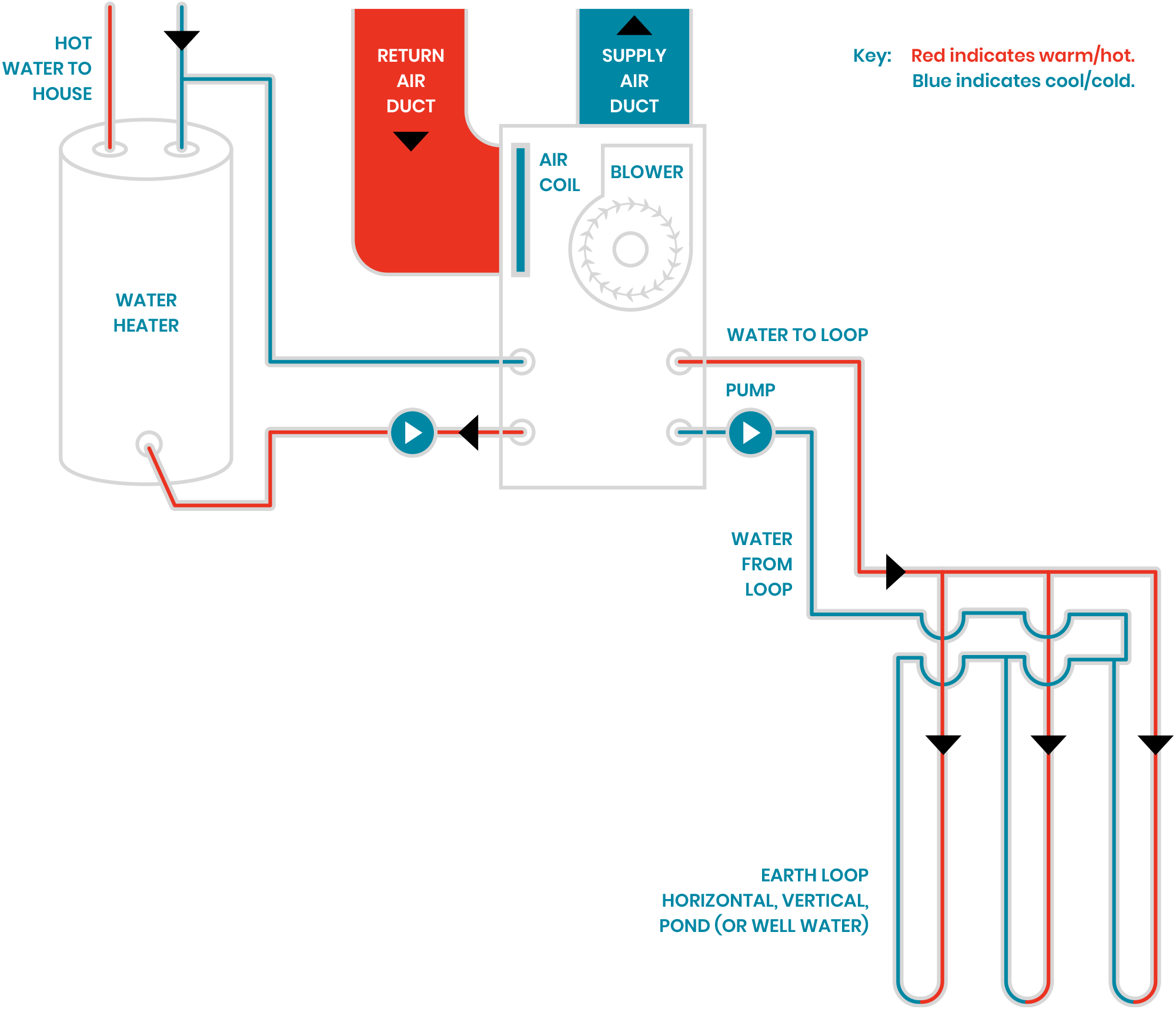
A water to water heat pump showing various uses for hot and chilled water
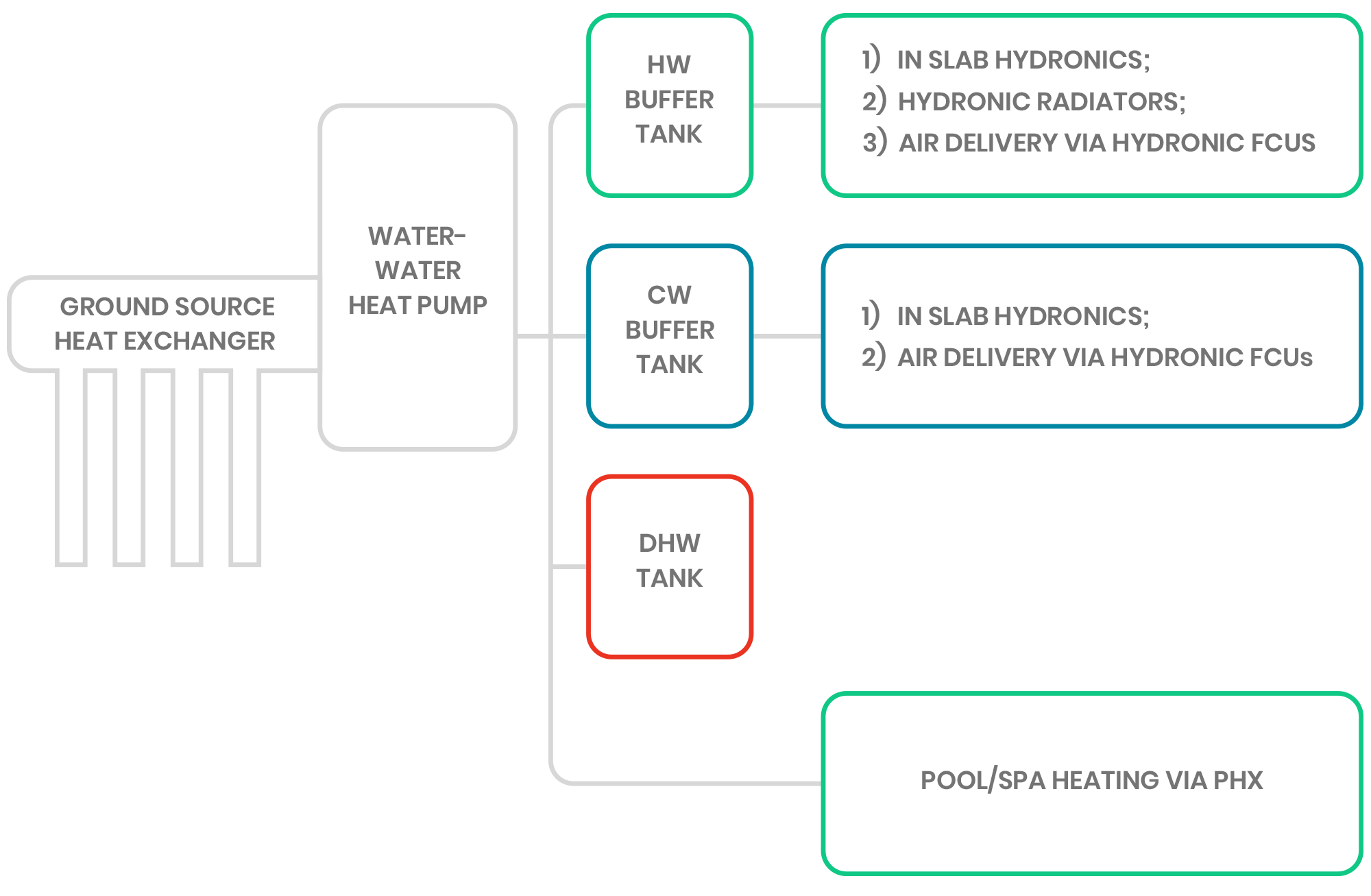
A water to refrigerant heat pump showing multiple internal FCUs for air based heating and cooling.
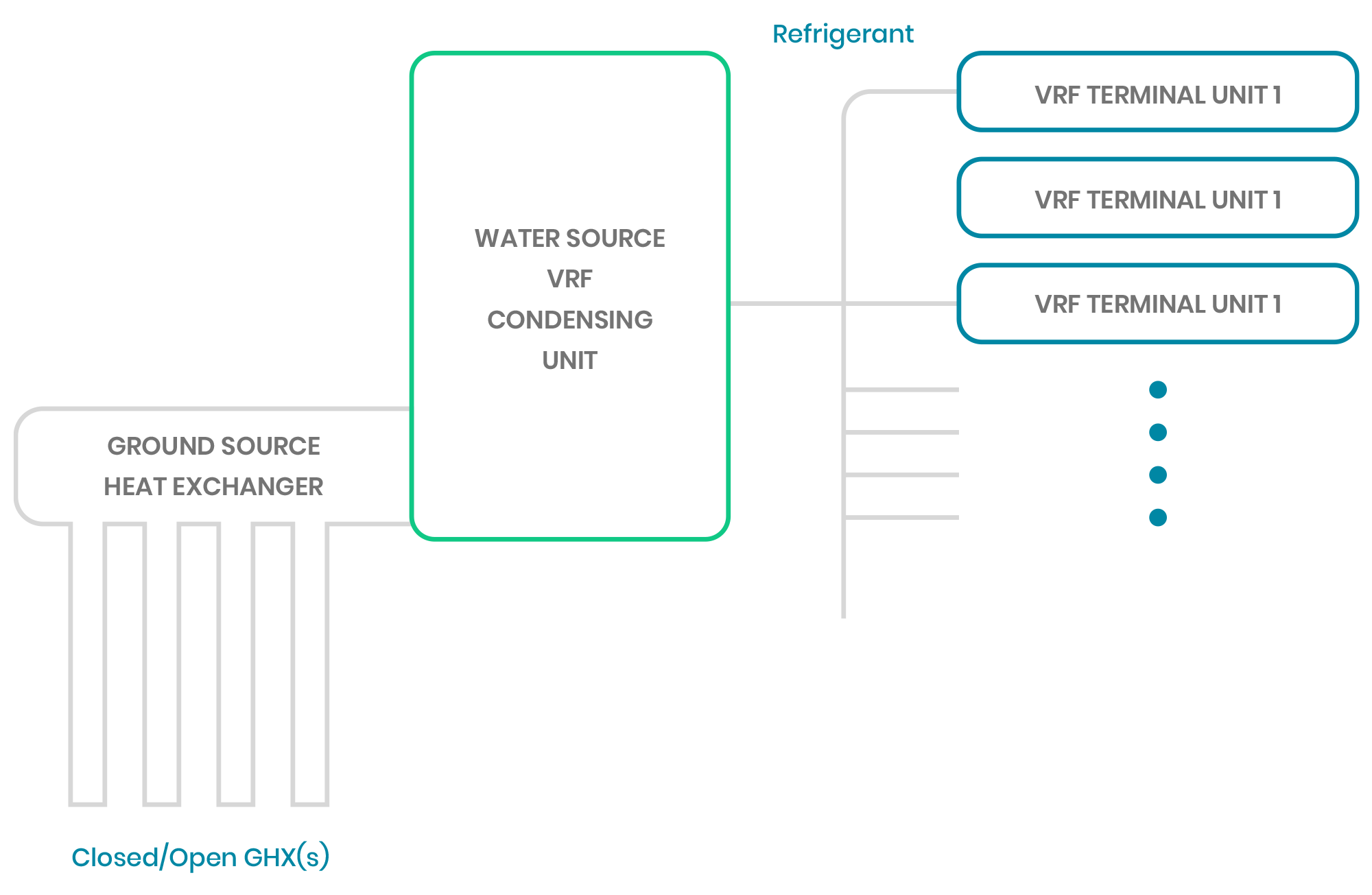
Sources of Renewable Thermal EnergyAs shown in the below variation of the previous table, renewable thermal energy comes in a variety of forms. Aside from ambient air, the most common source used in buildings is the ground, groundwater or water bodies. |
||
| Thermal Energy Source | Renewable or Non-renewable Source | Natural or Anthropogenic Source |
| Ambient Air | Renewable1 | Natural |
| Solar Thermal | ||
| Ground | ||
| Groundwater | ||
| Surface Water | ||
| Building Foundations | Anthropogenic | |
| Infrastructure (sewer / water / wastewater) | ||
| Other Buildings | ||
| Waste Heat (industrial processes etc) | ||
| Notes:
1 Renewable source assuming sustainable design. |
||
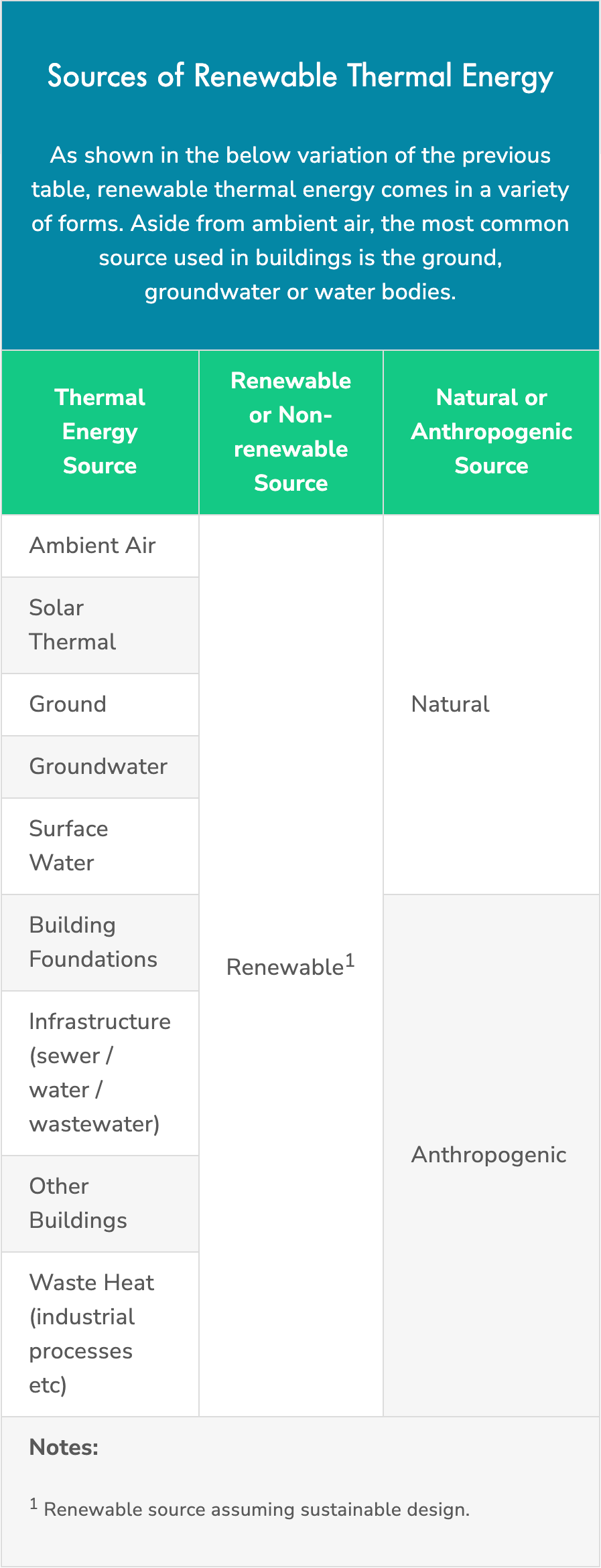
For each of these, the absorption of solar radiation/energy (47% of the sun’s energy that reaches the Earth) by the ground is their renewable energy source. In most localities across the globe, depths of greater than two to three metres provide a stable temperature environment that is the approximate equivalent of average annual air temperature plus 2-3C for that location.
One is only required to enter an underground cave or wine cellar to experience this temperature stability first hand. These stable temperatures are typically present in the top 100m or more of the ground.
Geoexchange systems utilise this solar energy stored within the earth for heating buildings in winter (earth as a heat source) and as heat rejection in summer (earth as a heat sink).
Of note, it is not geothermal energy that is providing this thermal energy, hence the term geoexchange rather than geothermal being more technically correct. A ‘true’ geothermal system does not require a heat pump as it has geothermally enhanced temperatures that can be used directly as either a heat source or if really high for energy generation.
